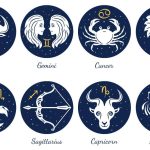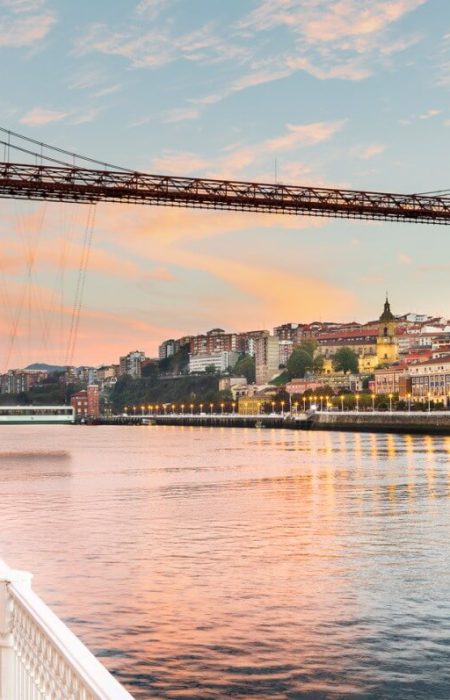In May 2017 Disney opened Pandora — The World of ‘Avatar’ in one of its Florida parks. After riding the Expedition Everest roller coaster and snacking on a Mickey Mouse-shaped ice cream bar, Disney guests can wander amongst bio-luminescent plants and see the “floating” mountains of Pandora, the exoplanetary moon where the blue Na’vi people and the resource-stealing earthlings have reached an agreement for a peaceful co-existence.
While Disney’s Imagineers have designed a beautiful park, why not go to the real place that inspired the James Cameron film and its computer-generated planet? In China you’ll find an abundance of magical mountains with fantastical animal-shaped rock formations, a hanging temple that I can’t imagine anywhere but a Disney park, and islands that indeed look like they’re floating.
Even after three visits to China, I’m consistently surprised at the diversity of the landscapes in this country stereotyped as being just a series of polluted megalopolises. China’s rural areas are green and welcoming of both domestic and international tourists, and the day hiking is fantastic.
Wulingyuan Scenic Area’s Zhangjiajie National Forest Park
Steadying myself against what I hope is a very sturdy fence, I lean out over the abyss to see if I can see where the tree-topped sandstone columns rise up from the valley below me. I can’t. Though I know it’s not true, the columns do look like tall islands hovering above the misty forest floor.
I’m on a mountaintop in Hunan province, in south central China, but I almost feel like I could be on Pandora. It is here at Zhangjiajie National Forest Park that art director Steve Messing found the inspiration for the concept design of Avatar. It’s easy to see how.

Walkways take me out to the edge of cliffs and everywhere I look there are strangely shaped pillars and rocky towers, all covered in vivid green vegetation. I half expect an ikran — the feathery flying banshee dragons of the movie — to come swooping around a corner.
Just like at Disney, you can expect both magic and crowds at China’s AAAAA tourist sites (yup, all sites are rated, with the quintuple As reserved for the very best). Especially at Wulingyuan and Zhangjiajie, a UNESCO World Heritage site, the summer crowds can be jam-packed with everyone wanting photos of the 3000 columns in this unearthly landscape.
One of the most popular spots is around a model ikran. Reaching the front of the patient line, small children and grownups alike climb onto the dragon to pose, giggling, for souvenir photos. I prefer photos of the 3544-foot Southern Sky Column, now renamed the Avatar Hallelujah Mountain, over the Instagram-able ikran shots. But I can’t resist a few snaps of the tourist fun. As a foreigner, I find China’s touristy bits as fascinating as the incredible scenery.
A calligrapher carefully paints what I first assume is the name of the child raptly watching him. Upon completion, I think it’s more likely a poem or perhaps a prayer to frame for the wall. Eyes protected just with sunglasses, a woman sculpts glass figurines in the flame of what looks like a bunsen burner. Young men buy the tiny sculptures for their girlfriends, who are adorned in the latest labels despite the amount of walking they need to see the whole 11,900 acre site. Though I think they’re cheesy everywhere else in the world, I find the walkway railings covered in love locks — made on site, and all consistent in patina — charming.
In favor of selfies against the dramatic backdrop, domestic tourists ignore the turtles basking in the sun and the butterflies resting on the railings which protect those of us without wings from falling into the voids next to the floating islands. While we can only see this natural mountaintop landscape because of the infrastructure created for tourists, it somehow seems both more magical and more real than Disney.
Feet sore, at the end of the day I descend down the side of a cliff aboard the glass Bailong elevator. Named before Avatar and the flying ikran, Bailong foreseeably translates as “hundred dragons sky lift”. At 1070 feet high, it’s the tallest outdoor elevator in the world. It might not give the same Disney thrill as a backward rollercoaster through the terrain of the Yeti, but it’s still a fantastical experience.
Sanqingshan National Park
China is full of such experiences. There’s a surprising number of day hikes through spectacular mountains strewn across the country. The toothy karst landscapes of Hunan, Fujian, and Jiangxi provinces provide some of the most awe-inspiring scenery.

My favourite is in Jiangxi province at another UNESCO site. The immense Sanqingshan National Park, a cable car ride above the city of Shangrao, can be seen in one day if you have the stamina to climb up and down its thousands of steps at a quick pace. But it’s better to take two days to fully explore the miles of stone walkways twisting around the area’s 48 peaks and 89 pillars of granite poking out from the verdant green trees.
Many Chinese but only a handful of international tourists marvel at the rock columns that resemble spitting cobras, dolphins, and penguins peering into the sky. As magical as these formations are, they are explainable. What I can’t account for is a solitary leafless red-berried tree that is enrobed in ice, when everything around it seems like summer. I’m told there are mystical white rainbows and haloed clouds here too. I don’t see them myself, but the site is so otherworldly that it wouldn’t surprise me.
The Suspended Temple
Another mountain has an almost-unexplainable site too, this one man-made. In Shanxi province, a three-tiered monastery seems to be glued to the side of a cliff hundreds of feet in the air. Getting closer, I see that spindly wooden poles prop up the pagodas of the Hanging Temple. Still, I’m no more reassured that the building won’t slide into the gorge below as soon as one more person adds their weight to the corridors.

Walking through the temple, I can’t see the hidden support structure that, I’m told, really keeps the Xuan Kong Temple suspended. Perhaps the monk that built it in the year 491 was the original Disney Imagineer, as this structure looks exactly like feigned Disney magic.
Bajiaozhai Scenic Area
Back in Hunan, there are many magical mountains to explore. While sunshine often makes for the best outdoor photos, I’m grateful to have clouds the day I climb Bajiaozhai Scenic Area. The cable car is under repair, so we walk up the 1708 stairs to the top. I can’t imagine how much sweatier I would have been had the sun shone on me the whole way up. But it is on the summit that the real rewards of the grey day appear.

The clouds make it look like the mountain peaks below me are the backs of whales swimming through a misty sea. Like at Disney, there’s even a show to watch too. Surprised by seeing western tourists on the mountain, a green-clad park employee decides to impress us by climbing along a narrow ridge to a small shrine. One misstep and he will fall thousands of feet to the valley floor. Ever the showman, he even descends partially down a precipice. Grinning for photos, he clings to the rocks with one hand and splays the other into the peace sign.
Tianmen Mountain
Just like at Disney, China’s mountains are a place for wishes. You don’t wish upon a star here, but upon a red ribbon. I see shrines on various mountain tops throughout the country, but the most magical is on Hunan’s Tianmen Mountain.
The sunny day in the city below turns misty as our cable car rises above the 99 bends of Heaven-Linking Avenue and past Heaven’s Door, a 431-foot high natural hole in the mountain. This area is famous for hosting the Red Bull World Wingsuit Championships.
Also Read: Top 5 Places to Visit in Morocco

I’m sure the views atop Tianmen are amazing, but during my visit the mountaintop is engulfed in clouds. I’m somewhat relieved that I can’t see more than a few feet below me as I gingerly tiptoe across the glass walkways cantilevered out from the cliff walls.
The fog confuses my eyes. Up ahead of me the misty trees seem to turn from green to red. As I walk closer, I realize that the branches and railings are covered with thousands and thousands of arm-length red ribbons.
Seeing the delight and surprise on my face, my guide, Brick, explains. Entreating to a higher power, people transcribe wishes on the ribbons and then hang them from trees in hopes that the wish will be granted from the heavens. Brick helps me buy my own ribbon and, borrowing the black felt pen from the ribbon seller, he writes my wish in Chinese characters for me — “May my fantastic life continue to be so fantastic.”
Whether my wish is sent to a star, to Pandora, or somewhere else, I do not know. I do know that I find China much more magical than Disney.








